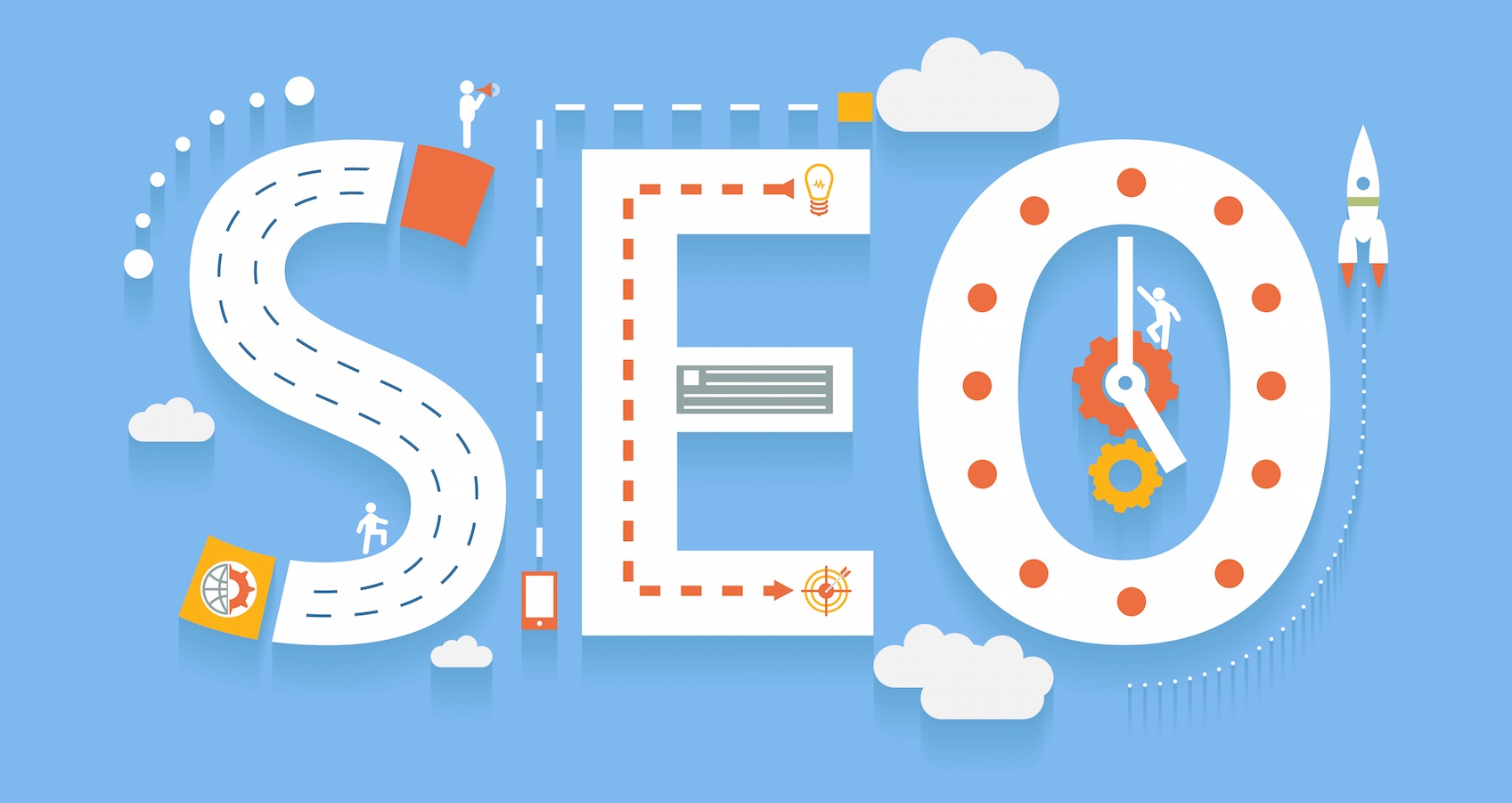
Adem Mert Kocakaya
Eyl 3, 2022SEO Terimler Sözlüğü

ChatGPT:
[A]
Algoritma: Bir hedef/eylem gerçekleştirmek için izlenebilecek tüm adımların belirlendiği ve sürecin oluşturulduğu kurallar zinciridir.
AMP: Accelerated Mobile Pages, Google tarafından geliştirilmiştir. Mobil cihazlarda web sitelerinin daha hızlı açılmasını sağlayan bir tasarım şablonudur.
A/B Testi: Kullanıcı davranışını ölçmek için bir web sayfasının veya uygulamanın iki farklı versiyonunun test edildiği süreçler bütünüdür.
AJAX: Bir web sayfasının sayfayı yenilemeden veri alışverişi yapmasını sağlayan JavaScript ve XML işlemleridir. Form ve sepet işlemlerinde görülebilir.
Anchor Text: Web sitesindeki herhangi bir içerikte verilen bağlantı veya bir siteden başka bir siteye yapılan bağlantılar için verilen kelimedir.
ASO: APP Store Optimization, Android ve iOS mobil uygulama mağazalarında uygulamaları öne çıkarmayı sağlayan optimizasyon çalışmalarının bütünüdür.
Ortalama Ziyaret Süresi: Bir kullanıcının web sitesinde geçirdiği ortalama zamanı ifade eden AVD veya ortalama oturum süresi olarak bilinir.
[B]
Backlink: Bir web sitesinden başka bir web sitesine verilen bağlantılara backlink denir. SEO çalışmalarında önemli rol oynar.
Blackhat SEO: Web sitesine zarar veren etik olmayan yöntemlerle arama motoru optimizasyonu uygulanmasıdır. Kısa vadede artış sağlasa da uzun vadede siteye zarar verir ve düşüş getirir.
Bounce Rate (Hemen Çıkma Oranı): Web sitesini ziyaret eden kullanıcıların sayfayı terk etme yüzdesini verir. Bir kullanıcı kısa sürede sayfadan çıkarsa bounce rate artar. Bu nedenle düşük bounce rate web sitesi için avantajlıdır.
Bot: Web sitelerini gezmek, veri çıkartma/gönderme işlemleri yapmak ve testlerde kullanılan sanal kullanıcı taklitleridir. Botlar aynı zamanda spider olarak da bilinir ve arama motorları tarafından ayırt edilebilir. Arama motorları genellikle siteleri taramak için bot kullanır.
Breadcrumb: Web sitesini ziyaret eden kullanıcıların ve botların sitede daha pratik gezinmesini sağlayan sayfa içi navigasyonlardır. Örneğin, bir sayfa ziyaret edildiğinde, o sayfanın bağlı olduğu kategoriden ana sayfaya kadar olan hiyerarşik navigasyondur.
Kırık Link/URL: Web sitesinde herhangi bir linkin artık açılmaması durumunda oluşan hata durumudur. Genellikle 404 hata kodu ile belirtilir. Kırık linkler, kullanıcı deneyimini zayıflattığı için SEO optimizasyonlarında tespit edilip kaldırılması/düzeltilmesi gereken önemli metriklerdir.
[C]
Cache: Web sitesinin son sürümünün statik olarak kaydedildiği ve kullanıcılara hızlı bir şekilde sunulduğu bir çerez yöntemidir. Aynı sayfayı tekrar ziyaret eden kullanıcı, sayfanın dinamik olarak yüklenmesini beklemek yerine cache’de saklanan son sürümü görür ve kullanıcı tarayıcısı performans kazanır.
Canonical: Bir web sayfasının özgünlüğünü ifade eden etiketlerdir. Örneğin, canonical sayfa, arama motoru botları için orijinal URL’nin bu sayfa olduğunu belirtirken, başka bir sayfaya verilen canonical etiketi, ilgili sayfanın sadece benzer olduğunu ve orijinal URL’nin canonical’de belirtilen URL olduğunu ifade eder. Bu nedenle canonical kullanımı SEO açısından çok önemlidir ve dikkate alınması gereken metriklerden biridir.
Call To Action: Kullanıcının sayfa içinde etkileşime geçmesini sağlamak için meta etiketlerden kullanılan harekete geçirici metin/cümle dizileridir.
CDN: Web sitelerinde kaynak dosyaları (resimler, CSS ve JS dosyaları gibi DOM öğeleri) farklı bir kaynaktan çağırarak tarayıcı performansını artırmak için kullanılan sunucuların genel adıdır.
CCTLD: Bir domainin sonunda yer alan ülke uzantısına verilen isimdir. Örneğin: sitename.com.tr / sitename.co.uk
Cloaking: Arama motoru botlarına, gerçek kullanıcılardan farklı bir sayfa sunma işlemidir. Genellikle arama motorlarını manipüle etmek için kullanılır. Gelişen arama motoru algoritmaları ile bu fark kolayca anlaşılır ve sağlıklı bir SEO çalışması için önerilmez.
Cookies: Cache yöntemine benzer şekilde kullanıcı oturumlarını ve işlenecek verileri saklayan tarayıcı depolama politikasıdır. Cache’den farklı olarak, kalıcı olarak saklamak yerine belirli bir süre sonra otomatik temizlenir.
Rakip Analizi: Bir web sitesine ait kategoride ürün/hizmet sağlayan rakip sitelerin iş, görünürlük, site içi/dışı analizlerini yapma durumudur.
Dönüşüm Oranı: Web sitesini ziyaret eden kullanıcıların bir ürün veya hizmeti satın alma davranışını ölçen sayısal değerdir. Kaç kişinin ürün/hizmet satın aldığını ve kaç kişinin iletişim/kayıt formlarını doldurduğunu ölçer.
CRO / Dönüşüm Oranı Optimizasyonu: Web sitesini ziyaret eden kullanıcıların ürün/hizmet satın alma/kayıt gibi davranışlarını artırmak için yapılan optimizasyon çalışmalarının bütünüdür.
CSS: Web sitelerinin format ve stilini belirleyen kod dilidir. CSS ile bir web sitesindeki resim boyutlarından, buton renklerine, yazıların font ve formatlarına kadar birçok stil düzenlemesi yapılır.
CTR (Tıklama Oranı): Performans pazarlamada, yayınlanan reklamların gösterimlere göre tıklanma oranını ifade eder.
Crawl Bütçesi: Arama motorları bir web sitesini tararken belirli bir tarama limiti ayırır. Bu bazı sitelerin %90’ını kapsarken, bazıları %70’ini kapsayabilir. Sitenin güncelliği, kullanıcı deneyimine uygunluğu ve özgünlüğü tarama bütçesini artıran pozitif faktörlerdendir.
CPC: Cost Per Click anlamına gelir ve web sitesinin arama motoru reklamlarında her tıklama için ödediği ücreti ifade eder.
[D]
Veri: İnternetteki tüm bilgiler.
Deindex: Arama motorları tarafından dizine eklenen bir web sayfasının dizinden kaldırılma işlemidir.
Anahtar Kelime Yoğunluğu: İlgili anahtar kelimenin web sitesi, sayfa veya makale içinde kullanım sıklığını ifade eder.
Disavow: Bir web sitesinin aldığı backlinkleri Google Search Console üzerinden reddetme işlemidir.
DNS: Bir web sitesinin sahip olduğu benzersiz IP adresidir.
Dofollow: Bir web sitesinden başka bir siteye verilen link/backlinkte, ilgili sayfa ve domain değerinin paylaşıldığı referans linklerdir. HTML tarafında arama motoru botları tarafından tanımlanmış bir özellik yoksa (nofollow, noreferrer, vb.) otomatik dofollow link olarak kabul edilir.
Domain: Bir web sitesinin adıdır. Her domain benzersiz olmalı ve Türkçe karakter içermemelidir.
Domain Skoru / Domain Otoritesi: Arama motorları tarafından bir domainin görünürlüğünü ve aldığı ziyaret oranına göre gücünü ifade eden sayısal terimdir. Yüksek domain otoritesine sahip bir web sitesinin paylaştığı içerik arama motorları tarafından hızlı bir şekilde dizine eklenir ve verdiği backlinklerin kalitesi diğer sitelere göre daha yüksektir.
Doorway Page: Bir web sitesini arama sonuçlarında üst sıralara çıkarmak için oluşturulan faydalı web siteleridir. Doorway page genellikle backlink stratejilerinde kullanılır.
Dwell Time: Kullanıcının arama sonuçlarından bir web sitesine tıkladıktan sonra tekrar arama sonuçlarına dönme süresini ifade eder. Dwell time ne kadar yüksekse, site için o kadar avantajlıdır.
Duplicate Content (Yinelenen İçerik): Bir web sitesindeki içeriğin birden fazla sayfada bulunması durumunda oluşur. Aynı zamanda, kaynağı göstermeden başka bir web sitesine içerik eklemek de duplicate content sorununa yol açar.
[E]
Dış Bağlantı: Bir web sitesinden başka bir web sitesine verilen bağlantıdır. Dış bağlantılar backlink gibi olduğundan, nofollow, dofollow, noreferrer, noopener gibi tanımlamalar ile eklenir.
[F]
Featured Snippet: Arama sayfasında doğrudan aranan konu hakkında bilgi veren, arama sonuçlarının en üstündeki sonuçlardır. Sıfır pozisyon olarak da adlandırılır. Genellikle siteyi ziyaret etmeden “Nedir? Nasıl yapılır? Nelerdir?” gibi sonuçları listeler.
First Contentful Paint: Web sitesinin ana içeriğinin yüklenme süresini gösteren sayfa hızı değeridir. FCP değeri ne kadar düşükse, web sitesi o kadar hızlı yüklenir.
Filezilla: Bir web sitesinin sunucusuna erişim sağlamak için kullanılan köprü programıdır.
FTP: Web sitesi dosyalarının bulunduğu sunucu/barındırma dizinidir. File Transfer Protocol, web sitesi sunucu dosyalarını depolamak ve dosya alışverişi yapmak için kullanılır.
Favicon: Tarayıcılarda görüntülenen web sitesi ikonudur. Genellikle tarayıcının üst kısmında, sekme bölümünde bulunur. Siteye dikkat çekmeye ve marka bilinirliğini artırmaya yardımcı olur.
[G]
Google Ads: Google reklamlarının yönetildiği platformdur. Performans pazarlama olarak da bilinir.
Google Analytics: Google tarafından sunulan ücretsiz bir web sitesi trafik izleme aracıdır. Web sitesini ziyaret eden kullanıcıların konum, yönlendirme, demografi (yaş/cinsiyet) gibi bilgilerini paylaşan ve geçmiş veri analizinin yapılabildiği kapsamlı bir takip ve analiz aracıdır.
Google Search Console: Google’ın ücretsiz web sitesi trafik takip aracıdır. Google Analytics’in aksine, kullanıcıyı doğrudan arama sonuçlarından gösterir. Site haritası, robots.txt dosyası, yanıt analizleri ve güncellemelerin Google ile paylaşıldığı adrestir.
Google BERT: Google tarafından geliştirilen BERT algoritması, günlük konuşmalarda yapılan aramaları anlamak için hazırlanmıştır.
Google Pirate: Genellikle korsan yayın yapan ve telif haklarını ihlal eden web siteleri bildirildiğinde, Google Pirate algoritması ilgili siteleri inceleyip indeks ve arama sonuçlarından kaldırılmasını sağlar.
Google Tag Manager: Google tarafından geliştirilen ücretsiz bir hizmettir. Web sitesi ziyaretçi davranışını izler ve analiz eder. Kullanıcıların davranışlarını ve sayfa içi aktivitelerini (form doldurma, butona tıklama, alışveriş dönüşümleri) analiz eder.
[H]
Heading Tag: Sayfanın arama motorları tarafından tanınmasında önemli rol oynar. H1’den H6’ya kadar listelenir ve her etiket boyut, font ve stil açısından farklıdır.
H1: Web sayfasının ne hakkında olduğunu belirten birincil başlık etiketidir. Sayfanın ana anahtar kelimesini doğrudan yansıtır. Başarılı bir SEO optimizasyonu için her sayfada 1 H1 olması önerilir.
H2: H1’in alt başlıklarını ifade etmek için kullanılan başlık etiketidir. Sayfanın içeriğinde ana başlıkları içerir.
Hreflang Tag: Bir web sayfasındaki alternatif dil versiyonunu belirtmek için kullanılır. Hangi sayfanın başka bir dil seçeneği olduğunu arama motorlarına gösterir.
Hosting: Web sitesinin dosyalarının depolandığı alandır. Hosting, web sitesindeki resim, HTML, CSS ve JS dosyalarının barındığı alandır.
Htaccess: Web sitesinin tüm yönlendirme (SSL, URL vb.) ayarlarının yapıldığı ana motor olarak kabul edilebilecek ana dosyadır. Genellikle sunucularda “.htaccess” olarak barındırılır. Başındaki nokta (.) dosyanın gizli olduğunu gösterir.
HTML: Tarayıcılar tarafından yorumlanan dünyanın en yaygın web gösterim dilidir. Günümüzde tarayıcılarla ziyaret edilen tüm sayfalar HTML formatında görüntülenir.
HTML Lang Tag: Bir web sayfasının dilini tarayıcıya ifade eden etikettir. HTML Lang etiketi ile tarayıcılar sayfadaki harfleri tanımlı dile göre formatlar. Örneğin, HTML Lang “EN” olan bir sayfada Türkçe karakter kullanılamaz, kullanılırsa tarayıcı bu harfleri otomatik olarak İngilizce karaktere çevirir.
HTTP: Web sitesinde farklı sistemler arasında iletişim sağlayan transfer protokolüdür. Örneğin, sunucudan/barındırmadan CSS & JS dosyası çağırma, veritabanından bilgi çekme, form ve satın alma işlemleri gibi birçok veri akışı HTTP protokolü içinde gerçekleşir.
HTTPS: HTTP protokolünde veri iletişimini güvenli hale getirilmiş versiyonudur. SSL sertifikalı bir HTTP protokolü HTTPS olarak gösterilir ve bu protokolde yapılan tüm veri gönderme/alma işlemleri şifrelenir.
[I]
IP: Web siteleri ile bilgisayarlar arasında veri alışverişini sağlayan adresdir.
Index: Genellikle arama motorlarının web sitelerini kategorize edip depoladığı alanı ifade eder. Bilgisayarlarda ise klasör ve kategorileme anlamında kullanılır.
Internal Link: Bir web sitesindeki bir sayfadan başka bir sayfaya verilen linktir. Site içi sayfaları desteklemek ve kullanıcı deneyimini kolaylaştırmak için SEO çalışmalarında kullanılır.
International SEO: SEO çalışması alt klasör/subdomain ve alternatif dil seçenekleri ile desteklenir.
Infinite Scroll: Kullanıcılar sayfada kaydırma yaptıkça yeni sayfaların, ürünlerin, hizmetlerin gösterilmesidir. Modern bir sayfalama tekniği olarak kullanılır.
Image Alt Tag: Web sitesindeki bir resmin amacı ve ne ile ilgili olduğunu ifade eden bir etiket formatıdır. Arama yapan kişi, sorgu terimiyle eşleşen alt etiketlere sahipse, kullanıcının arama terimiyle ilgili medya içeriği sayfada demektir. SEO açısından önemli metriklerden biridir. ALT LABEL olarak kullanılır.
Image Title Tag: Web sitesindeki bir resmin adını belirten etikettir. SEO uyumluluğu açısından resmin temsil ettiği paragrafın anahtar kelimesi yazılır.
[K]
Anahtar Kelime: Anahtar kelimeler SEO çalışmalarının ana stratejisini oluşturur. Web sitesinin trafik almak istediği organik sözcükleri ifade eder.
[L]
Latent Semantic Indexing (LSI): Anahtar kelimeler arasındaki anlamsal bağlantıyı ve ilişkiyi tespit eder. Örneğin, “araba” ve “benzin, kapı, bagaj” kelimeleri arasındaki anlamsal bağlantıyı kurar. SEO çalışmalarında LSI anahtar kelimelerinin kullanımı, içeriğin kalitesini artırdığı için önemlidir.
Link: Tıklanabilir bir HTML metnidir ve web siteleri içinde/arasındaki gezinmeyi kolaylaştırır.
Log & Log Dosyası: Log, bir web sitesi/uygulama/program üzerindeki işlemlerin kaydıdır. Örneğin, üyelikler, satın almalar, form doldurma süreçleri, yazılım taraflı hatalar ve bir web sitesinde yapılan güncellemeler “Log” kaydı olarak saklanır. Log kayıtlarını saklayan dosyalara Log Dosyası denir.
Landing Page (Açılış Sayfası): Tek sayfadan oluşan ve kullanıcı etkileşimi sağlamak amacıyla pazarlanan bir HTML sayfasıdır. Genellikle sosyal medya ve reklam kampanyaları için oluşturulur.
Lazy Load: Bir web sitesindeki görsel/medya içeriklerinin, kullanıcının ilgili alanı gördüğü anda yüklenip gösterilmesi işlemidir. Örneğin, bir web sitesine giriş yaptıktan sonra footer (alt kısım) görselinin yüklenmesi sayfa performansını ve kullanıcı deneyimini zayıflatır. Bunu önlemek için Lazy Load, ilgili içeriklerin yalnızca kullanıcı footer alanını görüntülediğinde yüklenmesini sağlar.
Link Building (Bağlantı Kurma): Kullanıcı deneyimini artırmayı amaçlar ve site içi ve site dışı olarak iki farklı başlık altında değerlendirilir. Site içi link kurmada, aynı web sitesindeki sayfalar arasında dolaşımı sağlamak için bağlantılar yapılırken, site dışı link kurmada, bir web sitesinden başka bir web sitesine bağlantı verilir.
Long Tail Keyword (Uzun Kuyruk Anahtar Kelime): En az 3 kelimeden oluşan ve arama terimini daha spesifik hale getiren anahtar kelimelerdir.
Local SEO: Sadece bir bölgeye (Marmara, İstanbul, Kocaeli vb.) özgü SEO optimizasyonu yapılmasıdır.
[M]
Meta Title (Meta Başlık): Arama sonuçlarında listelenen sitelerin başlığına verilen isimdir. Genellikle kullanıcıya gösterilmesi istenen başlık belirtilerek hazırlanır. Son güncelleme ile Google, arama sonuçlarında başlıkları ilgili içerik üzerinden otomatik belirlemeye karar verdiğini duyurmuştur.
Meta Description (Meta Açıklama): Arama sonuçlarında listelenen sitelerin açıklamalarıdır. Başlığın altında yer alır ve kullanıcı davranışını doğrudan etkilemek amacıyla hazırlanır.
Meta Keyword (Meta Anahtar Kelime): İlgili sayfanın hangi anahtar kelimeleri içerdiğini arama motorlarına ifade eden meta tag’dir. Google için önemli olmasa da diğer arama motorları için geçerliliğini korur.
Meta Tag: Genellikle arama motorları için oluşturulan meta etiketlerdir. Meta title, meta description, meta author, meta theme, meta keyword, meta robots gibi etiketler bilinir.
Metric (Metrik): Web sitesinin analizinde kullanılan ölçüm başlıklarını ifade eder. SEO metrikleri, web sitesinde arama motoru optimizasyonu için düzenlenmesi gereken kısımları ifade eder.
[N]
Niche: Bir sektör/profesyonel gruba ait özel alanı ifade etmek için kullanılır. Örneğin, “araba” genel bir kategori iken, “BMW marka/model araba” niche bir alanı ifade eder.
Noindex: Web sitesinde arama motorlarının indekslemesini istemediğiniz sayfalara eklenen meta tag’dir.
Nofollow: Web sitesinde aynı site içinde takip edilmesini istemediğiniz veya başka bir web sitesine verilen linklerde referans değerinin aktarılmasını istemediğiniz etiketlerdir. Backlink süreçlerinde önemlidir.
Noopener: Özellikle yeni sekmede açılan bağlantılarda, önceki sayfadan gelen cookie, session vb. bilgilerin farklı web sayfalarına aktarılmasını engelleyen etikettir.
Noarchive: Web sitesinin cache tarafında saklanan HTML halinin gösterilmemesi için kullanılır. Cache sorunları olan web siteleri sıklıkla bu etiketi kullanır.
Noimageindex: Web sayfasındaki indekslenmesini istemediğiniz görseller için kullanılan noindex benzeri bir meta tag’dir.
Noreferrer: Genellikle noopener etiketi ile birlikte kullanılır ve yönlendiren (referrer) bilgilerinin yeni açılan sayfaya aktarılmasını engeller.
Nosnippet: Arama sonuçlarında 0. sırada gösterilen snippet / featured results bölümüne dahil edilmemesi için sayfaya eklenen meta robots tag’dir.
Notranslate: Kullanıcıların tarayıcı diline göre web sitesinin otomatik çevirisini engelleyen meta robots tag’dir.
[O]
On Page SEO: Site hızı, görseller, meta tag’ler, yapılandırılmış veri işaretlemeleri gibi site içi SEO’yu etkileyen tüm metrikleri kapsar.
Offpage SEO: Web sitesine verilen dış bağlantılar, sosyal medya çalışmaları, backlink/promosyon metni, sosyal bookmark gibi site dışı SEO çalışmalarını ifade eder.
Open Graph Tag: Bir web sitesinin içeriğinin sosyal medya hesaplarında nasıl görüneceğini belirleyen meta tag’lerdir.
Organic (Organik): Herhangi bir yönlendirme linki içermeyen, başka bir web sitesi veya sosyal medya üzerinden gelmeyen, doğrudan arama ile erişilen, reklamsız doğal trafik ve çalışmaları ifade eder.
Organic Search (Organik Arama): Kullanıcıların arama motorlarına sorgu yaparak reklam olmayan/natural sonuçlara erişmesini ifade eder. Arama motorları üzerinden yapılan tüm sorgular organik arama kapsamındadır.
Organic Traffic (Organik Trafik): Arama motoru sorgularından web sitesine gelen ziyaretçilerdir. Web sitesinin, arama sonuçlarından doğrudan kazandığı trafiği yansıtır; aracı link, reklam, promosyon, sosyal medya içermez.
Orphan Page: Web sitesinde başka bir sayfadan link almayan sayfalardır. Genellikle arama motorları tarafından keşfedilmez ve taranmaz, bu yüzden indeksleme sorunları yaşarlar.
[P]
Post: Web sitesindeki blog içeriği veya sosyal medya gönderileridir.
Pagination (Sayfalama): Web sayfasında sayfalama için kullanılan terimdir. Örneğin, Google arama sonuçlarındaki “1,2,3,4….”. E-ticaret sitelerinde ürün listesi ve blog listesi sayfalarında kullanılır.
Page Speed (Sayfa Hızı): Bir web sayfasındaki DOM öğelerinin (CSS, JS, Medya İçerikler) ortalama yüklenme sürelerini belirleyen ölçektir. Sayfa hızı arttıkça kullanıcı deneyimi de verimli olur.
Page Authority (Sayfa Otoritesi): Bir sayfanın, dış bağlantılar, anahtar kelimeler ve organik ziyaretler baz alınarak belirlenen skorudur.
Paid Search (Ücretli Arama): Arama motorlarındaki reklam sorguları ve tıklamaları ifade eder.
Paid Traffic (Ücretli Trafik): Arama motorları, sosyal medya gibi reklam sonuçlarından elde edilen trafiği ifade eder.
Parameterized URL: Bir URL’nin sonunda yer alan “?” işaretidir. İşaret ile eklenen terimleri ifade etmek için kullanılır. Örneğin, “siteadres.com/shoes?color=red” adresindeki “color=red” parametredir ve bu URL parametrik URL’dir.
Paravan Blog: Bir web sitesini backlink tarafında desteklemek amacıyla açılan alt sitelerdir. Genellikle birkaç blog gönderisi girildikten sonra hedef siteye link çıkışı yapılır ve hedef sitenin otoritesini güçlendirmek amaçlanır. Verimli bir yöntem değildir.
Pogo Sticking: Kullanıcının arama sonuçlarından web sitesini hızlıca terk etmesi anlamına gelir. Oturum süresi ve kullanıcı memnuniyeti açısından olumsuz bir davranıştır.
Position (Pozisyon): Bir web sitesinin arama sonuçlarındaki sıralamasıdır.
[R]
Responsive: Bir web sayfasının mobil, tablet cihazlar ve tüm tarayıcılarda doğru açılması durumudur. Tüm cihaz ve tarayıcılarda tasarım yapısının, görsellerin ve stilin doğru görünmesi web sitesinin responsive olduğunu gösterir.
Rich Snippet: Arama motorlarının bir sayfayı anlamasına yardımcı olan HTML etiketidir; sayfa özeti, görsel ve medya içerikleri, breadcrumb ve diğer yapılandırılmış veri işaretlemelerini içerir.
Robots.txt: Arama motoru botlarının siteyi ziyaret ettiğinde karşılaştığı ilk dosya türüdür. Bu dosyada sayfaların taranma/ taranmama komutları ve sitemap yolu belirlenir.
[S]
Schema: Web sitelerinin arama motorları tarafından daha başarılı yorumlanmasını ve anlaşılmasını sağlayan yapılandırılmış veri işaretlemeleri ve meta işaretlemelerden oluşan bir referans platformudur.
Search Query (Arama Sorgusu): Arama motorlarında yapılan tüm kelime ve ifade sorgularıdır.
Search Volume (Arama Hacmi): Belirli bir dönemde bir anahtar kelimeyi kaç kullanıcının aradığını gösteren sayısal ifadedir.
SEO: Search Engine Optimization (Arama Motoru Optimizasyonu) anlamına gelir. SEO, web sayfalarını arama motorlarının kriterlerine göre organize eder ve optimize ederek kullanıcı deneyimini iyileştirir.
SEM: Search Engine Marketing (Arama Motoru Pazarlaması) anlamına gelir. Belirli anahtar kelimelerde arama motorlarına fiyat teklifleri vererek bir web sayfasının arama sorgularının ilk sayfasında reklam alanında görünmesini sağlar.
SERP: Bir anahtar kelime için arama sonuçlarının gösterildiği sayfadır.
Server (Sunucu): Web sitesi barındırma ve tasarım, JS vb. tüm ağ isteklerini yapan birimdir. Hosting ve tasarım dosyaları gibi tüm içerikleri barındırır.
Server Response Time (Sunucu Yanıt Süresi): Tarayıcının bir web sayfasını yükleyebilmesi için sunucudan aldığı DOM öğelerinin gönderilme süresidir. Sunucu işlemcisi ne kadar güçlü ise yanıt o kadar hızlı olur.
Session (Oturum): Kullanıcının web sitesinde geçirdiği süredir. Kullanıcının etkileşimde bulunduğu tüm sayfa sürecini kapsar.
Session Duration (Oturum Süresi): Google Analytics’te sıkça karşılaşılan ve kullanıcıların web sitesinde ortalama geçirdiği süreyi ifade eden terimdir.
Short Tail Keyword: 3 kelimeden az oluşan anahtar kelimelerdir. Örneğin: “Araba fiyatları” short tail keyword’dür.
Sitemap: Web sitesindeki kategori ağacı, sayfalar, ürün/hizmetleri URL olarak listeleyen ve arama motorlarının tarama verimliliğini artıran xml uzantılı dosyalardır.
SSL Certificate: Verilerin güvenli şekilde iletilmesini sağlayan web protokolü “http”nın güvenli versiyonudur. “https” olarak görünür ve web sayfasındaki tüm istekleri şifreler. Banka, kredi ve kişisel bilgiler gibi veriler korunur. Arama motorları için çok önemli bir metriktir.
Subdomain (Alt Alan Adı): Bir web sitesinin domain uzantısı ile açılan alt web sitesidir. Örneğin, ana site “siteadres.com” ise, “example.siteadres.com” alt alan adıdır.
Subfolder (Alt Klasör): Web sitesinde domain sonrası gelen ve klasör şeklinde açılan dizinlerdir. Örneğin, ana site “siteadres.com” ise, “siteadres.com/pictures” alt klasördür.
[T]
Technical SEO: Web sitesi altyapısı, sunucu taraflı çözümler, JS ve CSS analizi, site hızı, link derinliği gibi konuları kapsayan arama motoru optimizasyon çalışmalarını ifade eder.
TTFB (Time To First Byte): Bir web sitesi açıldığında sunucuya gönderilen isteğe verilen yanıt süresidir. İdeal süre 0,2 saniyedir.
[U]
URL: Bir web sitesine giriş yapmak için kullanılan protokol + kimlik + domain uzantısı + ülke uzantısı + alt klasörlerin tümü URL’yi oluşturur. Örneğin siteadrescomtr/page bir URL örneğidir. URL, web sitesine ulaşmak için kullanılan aracıdır.
URL Structure (URL Yapısı): URL’ler her zaman hem kullanıcıya hem de arama motoru botlarına sayfa içeriğini anlatan anahtar kelimeler içermelidir. Örneğin, araba fiyatları sayfası için: siteadres.com/abcd12345 yanlış bir URL’dir. Doğru kullanım: siteadresi.com/araba-fiyatlari örnek verilebilir.
User (Kullanıcı): Web sitesini ziyaret eden kişiler.
User-Friendly (Kullanıcı Dostu): Web sitesi ziyaretçilerinin daha hızlı ve pratik şekilde gezinmesini ve etkileşimde bulunmasını sağlayan tüm sayfa, içerik ve siteler.
User Interface (UI): Kullanıcıların web sitesiyle etkileşime geçmesini sağlayan web stil ve tasarım yapısıdır.
Bt, web sitesini ziyaret eden kullanıcıların bir ürün/hizmet satın alma davranışlarını analiz eden ve optimize eden alandır.
[V]
Visibility (Görünürlük): Arama sonuçlarındaki pozisyon, gösterim ve tıklamalar bir web sitesinin SEO görünürlüğünü ifade eder. Ayrıca sosyal medya ve backlink görünürlüğü de bu kapsamda değerlendirilebilir.
Visitor (Ziyaretçi): Web sitelerine erişen ve sayfaları gezen tüm gerçek kullanıcılar (botlar hariç).
Visual Optimization (Görsel Optimizasyonu): Kullanıcıların sayfayı daha hızlı görüntülemesini sağlamak için web sitesindeki görsellerin boyutunu kaliteyi düşürmeden küçültme, piksel boyutuna göre ölçekleme ve arama motorlarının istediği formatlara dönüştürme (JPEG, JPG, WEBP vb.) sürecidir.
[W]
White Hat SEO: Arama motorlarının uygun gördüğü metrikleri doğal ve en uygun şekilde optimize eden SEO çalışmalarının bütünüdür. White Hat SEO’da arama motorları için yasa dışı veya manipülatif teknikler yoktur.
WWW: Internet üzerinde veri transferini doğrulayan protokollerden biri olan World Wide Web anlamına gelir. Bir üreticisi veya merkezi yoktur.
WordPress: Bireylerin/işletmelerin kendi web sitelerini oluşturmasına olanak tanıyan açık kaynaklı web oluşturma arayüzüdür. Pratikliği ve SEO uyumluluğu nedeniyle en çok tercih edilen açık kaynak web yazılımıdır.
Woocommerce: WordPress altyapısına sahip web sitelerinin e-ticaret yapmasını ve sanal POS ekleyerek ödeme almasını sağlayan bir WordPress eklentisidir.
[Y]
Yandex: Rusya merkezli bir arama motorudur. Google’dan sonra en çok kullanılan arama platformlarından biridir.
Yandex Metrica: Yandex tarafından geliştirilen, Google Analytics’e benzer ücretsiz bir site geliştirme ve analiz aracıdır.
[Z]
Zero Position: Arama sonuçlarının en üstünde kullanıcıya özet bilgi olarak paylaşılan snippet konumudur.
Z-index: CSS özelliği türüdür. Web sitesindeki öğelerin ekran derinliğini belirler. Nesnelerin üst üste gelmesini sağlayarak responsive tasarımda sıkça kullanılır.
[HTTP Status Codes]
301 Redirect: Bir web sayfasını kalıcı olarak başka bir sayfaya yönlendiren ve eski sayfanın tüm otoritesini ve URL puanını yeni sayfaya aktaran yönlendirme kodudur.
302 Redirect: Bir web sayfasını geçici olarak başka bir sayfaya yönlendiren ve eski sayfanın otoritesini ve puanını yeni sayfaya aktarmayan yönlendirme kodudur.
400 Error Code (Bad Request): Web sunucusuna gönderilen isteğin hatalı olduğunu ve sunucunun yanıt veremediğini gösteren hata kodudur.
401 Unauthorized: Bir web sayfasına yapılan isteğin gerekli yetkilendirmeye sahip olmadığında döndürülen hata kodudur.
403 Forbidden: Web sitesini ziyaret eden kullanıcı bilgilerinin sunucu tarafından engellendiğini belirten durum kodudur.
404 Page Not Found: Var olmayan/kaldırılmış sayfa/URL’ye erişilmeye çalışıldığında döndürülen uyarı kodudur.
500 Server Error: Web sunucusuna gönderilen isteğin yerine getirilemediğinde veya engelle karşılaştığında döndürülen hata kodudur.
503 Service Unavailable: Sunucu bakımı veya aşırı yüklenme nedeniyle oluşan hata kodudur. Genellikle sayfalarda kod/istek döngüsü olduğunda sunucunun aşırı yüklenmesi nedeniyle meydana gelir.
More resources

Google MMM ile Satış Artışlarını Doğru Ölçmenin 5 Yolu
Google MMM (Marketing Mix Modeling), pazarlama karması modellemesi olarak bilinen bu yöntem, çerezsi...

ChatGPT Shopping Research Nedir? Nasıl Çalışır?
ChatGPT Shopping Research, kullanıcıların alışveriş araştırmalarını hızlandıran yapay zeka destekli...

Black Friday Sonrası Sadık Müşteri Kazanmak İçin Veri Tabanlı Taktikler
Sadık müşteri kazanımı, Black Friday sonrası dönemde e-ticaretin en stratejik hedeflerinden biridi...

